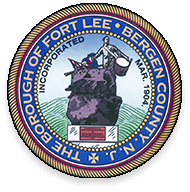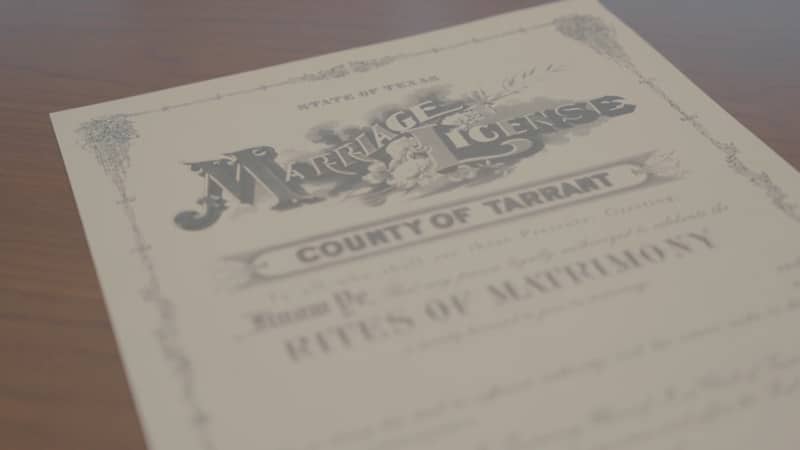Case Study
How Fort Lee Used GovOS Studio To Build Online COVID Self-Assessment Forms
Overview
Fort Lee is located just west of the George Washington Bridge, the busiest bridge in the country. The following includes a discussion with Kristin Schulman the Communication Manager of Fort Lee.
Fort Lee, NJ
Kristin Schulman
Communication Manager

Situation
In 2020, Governor Murphy signed an executive order to protect New Jersey’s workforce during the pandemic. The order, New Jersey EO 192, does the following:
- Establishes health and safety standards that apply to both public and private sector workplaces;
- Directs the New Jersey Department of Health (NJDOH) and Department of Labor and Workforce Development (NJDOL) to establish enforcement mechanisms to ensure that employee complaints and reports of noncompliance with EO 192 are addressed; and
- Directs the NJDOL to develop and provide compliance materials and safety training related to the requirements of EO 192.
Starting November 5, all employers that require or permit all or part of their workforce to be physically present at a worksite to perform work must follow the health and safety protocols:
NJ Guidelines for Maintaining Employee Safety:
- Health screen
- Conducting daily health checks of employees, such as temperature screenings, visual symptom checking, self-assessment checklists, and/or health questionnaires, consistent with both CDC guidance and the confidentiality requirements of applicable state and federal laws;
- Excluding from the workplace employees who appear to have symptoms consistent with COVID-19 and following the requirements of applicable leave laws;
- Promptly notifying all employees of any known exposure to COVID-19 at the worksite, while maintaining the confidentiality of the infected individual(s) and cleaning and disinfecting the worksite when an employee has been diagnosed with COVID-19.
- Face masks
- Requiring individuals at the worksite to wear face masks, with certain limited exceptions, though employees may be permitted to remove face masks when they are situated at their workstations and are more than six feet from other individuals, or alone in a walled office;
- Permitting employers to deny entry to the worksite to employees or visitors who decline to wear a face mask unless doing so would violate applicable laws such as the Americans with Disabilities Act and/or the New Jersey Law Against Discrimination;
- Requiring employers to make available, at their expense, face masks to their employees, although employees may use their own face mask if they prefer.
- Hand washing
- Ensuring that employees practice regular hand hygiene and provide employees break time for repeated handwashing throughout the workday
NJ Guidelines for Maintaining a Safe Worksite
- Requiring that individuals at the worksite (including employees, customers, and visitors) maintain at least six feet of distance from one another to the maximum extent possible;
- Where the nature of an employee’s work or the work area does not allow for six feet of distance to be maintained at all times, installing physical barriers between workstations wherever possible;
- Requiring employers to make available sanitization materials, such as hand sanitizer to employees, customers, and visitors at no cost to those individuals;
- Routinely cleaning and disinfecting all high-touch areas such as restrooms, handrails, door knobs, and other frequently touched surfaces.
While many New Jersey employers conducting on-site operations are likely following many of these protocols already, going forward, employers must ensure they are complying with all of the protocols set forth in EO 192 at all worksites in the State.
Penalties for non-compliance with the mandates of EO 192 include the potential closure of worksites, fines of up to USD $1,000.00, and up to six months in prison.
Solution
Using Digital Forms to Ensure Compliance
In response to this mandate, GovOS had a lot of partners reach out almost immediately at the end of October and beginning of November 2020, to see what they could do to at least start to check some of these things off the list.
Some examples of municipalities that brought forms online quickly in response to the executive order include:
- City of Clifton Daily COVID Questionnaire
- Jefferson Township Health Screening Form
- Cape May Facilities COVID-19 Screening
Fort Lee Used GovOS Studio to Launch Daily COVID Self-Assessment Forms
In late 2020, Karl Pawlewicz of GovOS spoke virtually with, Kristin Schulman, the Communication Manager for the Borough of Fort Lee. Kristen gave us a closer look at why and how they brought a COVID-19 self-assessment form online for their employees.
Karl: Kristin, could you introduce yourself and talk a little bit about your role within the borough?
Kristen: Thank you for having me today. I’m the communications manager for the Borough of Fort Lee and my role is relatively new here – coming up on three years here now. I was brought on board to establish a social media presence through Facebook, Instagram, Twitter, and to design a new website, because our previous site was extremely archaic and very non-user friendly.
As I have been establishing this role, communicating with the employees as well as the public, it’s given me an opportunity to do what I’ve been wanting to do for a while, which is partner with [GovOS] because we all know the future is having everything online and paperless. But that idea was a little scary to a lot of people around here, so we continuously put it off until the pandemic started. This mandate then became the perfect opportunity to digitize our forms and engage with Kofile. They were my first call and it worked out perfectly.
Karl: Can you talk us through the process – how much time did you have to get this form created? How quickly did you move to get something launched?
Kristen: I think it was October 28th when the executive order was announced. I got a call from my borough administrator on that Friday saying, this is what we need to do. It needs to go into effect next Thursday. He handed me a sheet and said, “Everybody that works for the Bureau of Fort Lee is going to be filling these out every single day.” That obviously didn’t make a lot of sense in terms of workload, and we said these applications should absolutely go online.
So first thing, Monday morning, I called [GovOS] and said, “I need this by Thursday – what can you guys do?” I gave them the document that we had been working off of, but that was kind of a work in progress, because we didn’t know exactly what information we needed to collect from employees. Once we got the document up online, we were able to continue making tweaks and adjustments like, if this box is checked off, then this person needs to know. And if this is checked off, then this other person needs to know. So we had to gather that information – emails and names – and we also established that we would need to have a couple different sections.
- Less serious conditions
- More serious conditions related to COVID
- Close contact with those who have tested positive
We have our form configured so that if an employee checks two or more boxes, then that sends a red flag to several different people who would need to know about that. That was really important for us because with 400 people, looking at 400 emails every day would make someone’s head spin. The form makes it easier to pull out applications that needed special attention. And then we added a dropdown menu for different departments, and that makes the whole process easier for the department heads to manage.
It also helped us realize that we needed to break out some separate forms for departments that were much larger, like our Police Department. So we created a separate form for our Police Department. Both of these forms have been simple and foolproof. So now we send these links to every one of our employees each day, and they can complete these at home or on a mobile device. We ask them to complete these forms before they come into the office, and that helps us keep people away from our office building, which is part of the mandate.
Results
Karl: I think it’s worth mentioning too that the first form you mentioned here has had over 1800 submissions since you brought it online on November 5th.
Kristen: If we had tried to do this with just paper, you can imagine how many more people would be moving around the borough and in and out of our office buildings and it just did not make sense. With this mandate to cut down on foot traffic, we knew we had to bring everything online. Everybody is responding really well to this – the form takes about 20 seconds to fill out every morning. And we offer this form in addition to a standing temperature thermometer, a table with the hand sanitizer and the wipes, and basically a big sign saying, “Have you filled out your form?”
Karl: Can you talk a little bit about what happens when someone submits this form?
Kristen: Each submission goes directly to the supervisor of the department. I also have a complete log of these in the backend on my accounts. If I needed to I could separate them by department and run a report of all submissions pretty quickly.
Karl: One last question, Kristin. For anyone who is listening to today’s webinar and thinking, “Well, I don’t have the technical know-how to get these forms launched or manage them for my municipality.” – Can you talk just a little bit about what this process of creating and launching forms was like for you?
Kristen: Yeah, of course. This was so easy. You absolutely don’t need any technological background. As soon as Dasha showed me how to do it, I was duplicating forms and doing the rest of it by myself. I’m already working on other forms too, and I haven’t even really gone through a formal training yet. Once we have all of this done and everyone is on board at the borough about having everything online and paperless, they’re not going to believe that we didn’t do this sooner.
For more information about GovOS Application Studio, visit govos.com/products/application-studio/
Want to learn more about what GovOS has to offer?


